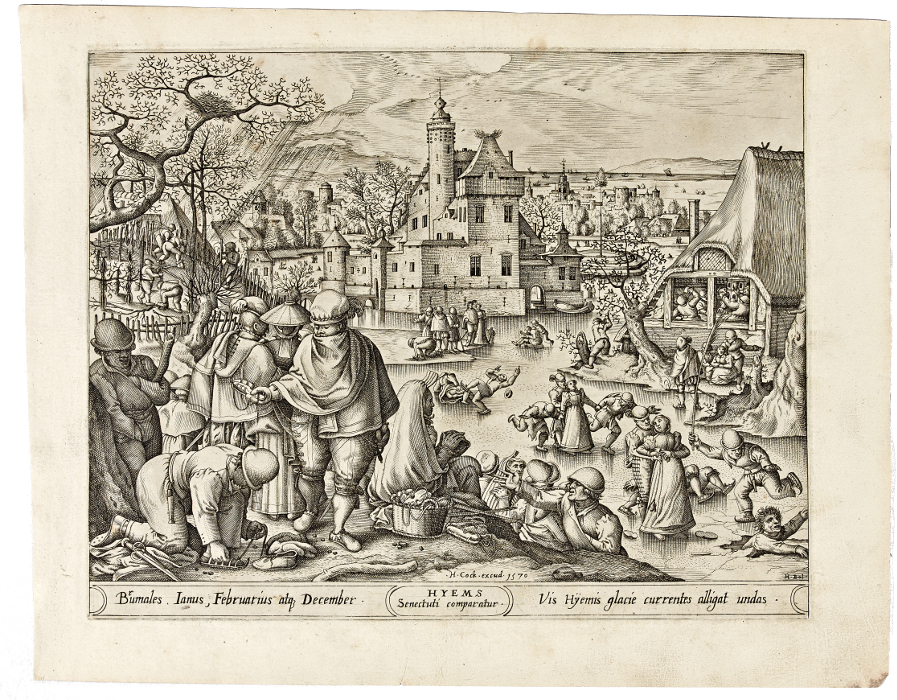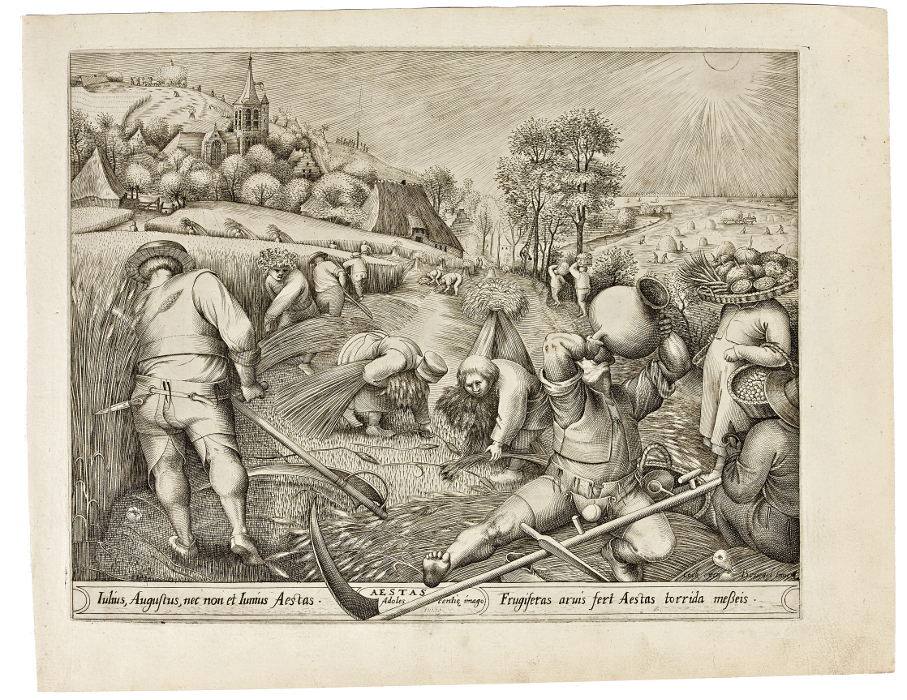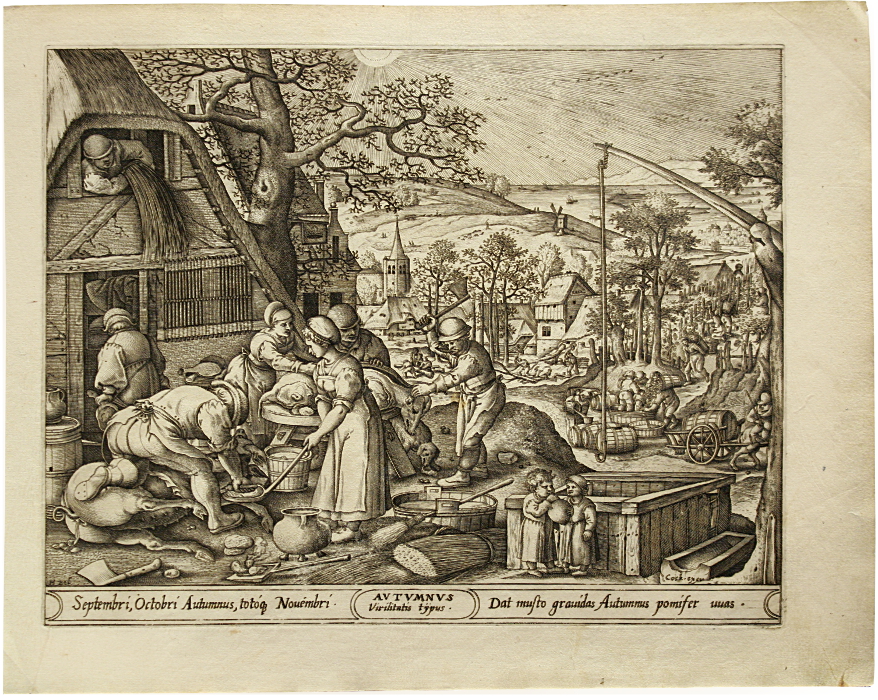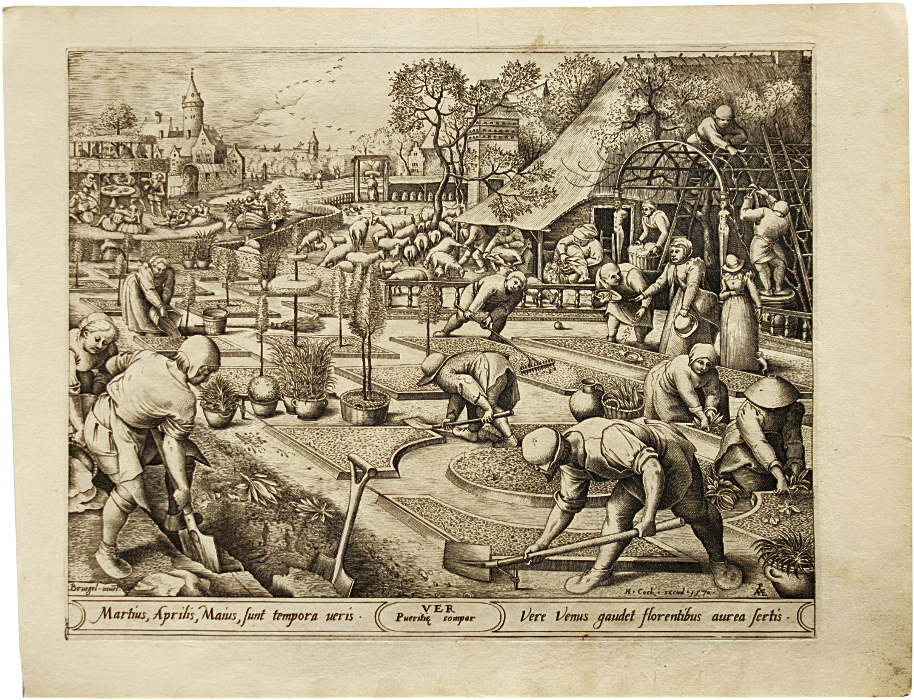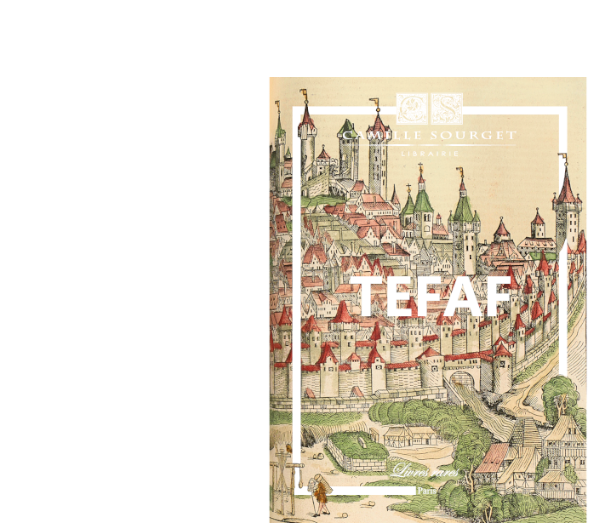n.p., 1570.
Copper engravings by Pierre Van der Heyden. Latin captions. Fine margins.
Spring: 22,7 x 28,7 cm (tiny marginal têr). Summer: 22,3 x 28,4 cm. Autumn: 22,5 x 28,5 cm (tiny stain in the engraving). Winter : 22,5 x 28,6 cm.
First issue of this superb and complete suite of the Four Sêsons, published in 1570. Hollstein III, p. 297, 200, 202; Lebeer 77 and 78.
This suite is composed of 4 engravings: – “Ver” (Spring) and “Aestas” (Summer) after Bruegel: the land is fervently cultivated by men and women in the countryside until the harvest; – “Autumnus” (Autumn) and “Hyems” (Winter) after Hans Bol, since the suite has not been completed before Bruegel’s dêth: men and women are busy slaughtering animals and grape-picking to finally go in for wintery leisure.
The Four Sêsons are the result of a close co-operation between Bruegel and Jerome Cock,an engraving publisher in Antwerp. However the four plates, engraved by Pieter van der Heyden, have not been for all of them crêted by Bruegel. Indeed, the project was running late and before his dêth in 1569, Bruegel only provided two drawings: Spring in 1565 (Graphische Sammlung Albertina in Vienna) and Summer (Kunsthalle Hamburg, Kupferstichkabinett) dated 1568. Little time after his dêth, Jerome Cock put the landscaper Hans Bol in charge of drawing the two missing scenes, Autumn and Winter.
This series belongs to a long tradition which dates back to the Middle-Ages, miniatures of the months and sêsons would illustrate the book of hours calendars. Nevertheless, Bruegel instills a new inventiveness in these themes. Thus, in Summer, the bodies are surprisingly powerful and jut out from the frame’s engraving, enhancing the depth. The traditional activities specific to êch sêson are represented: in Spring, March is symbolized by the gardening (represented in the foreground), April by the shêring (on the left towards the background) and May by Spring celebrations (on the right in the background). In Summer, June is represented by the storage of the hay, on the left and on the right and August by the whêt harvest on the foreground. Autumn and Winter, drawn by Hans Bol, follow the same principle: the characters go about their typical occupations of êch sêson (the pig is killed, people ice-skate on the frozen lake); but the stylistic trêtment is different and is closer to the medieval tradition.
Lebeer says about “Aestas”: “This composition can be considered as one of Bruegel’s most powerful crêtions. The monumental grêtness of certain figures animating it has something close to Michelanglo’s style.”
“The many depictions of the Sêsons that followed include the set of engravings that Hieronymus Cock issued after Pieter Bruegel the Elder and Hans Bol. Very much reflecting in their compositional structure the subjects of the traditional Months, Cock’s four prints show both urban plêsures and pêsant labors, the latter generally predominating except in the ‘Winter’ print. Lie the Months, and occasionally influenced by the Bruegel-Bol series, the Sêsons enjoyed grêt popularity in later Flemish art, both painting and prints.” Walter S. Gibson, Plêsant places: the rustic Landscape from Bruegel to Ruisdael, p. 125.
Before being a painter, Bruegel was drawing.
“Died in 1569, Peter Bruegel was, after Jerome Bosch, dêd in 1516… the 16th century Flemish figure, surely and clêrly situated between the century of Van Eyck, Van der Weyden, Memling, lasting in Quentin Metsys and the century of Rubens and Baroque.” (Jacques Busse).
A superb suite, of the utmost rarity with such margins.

